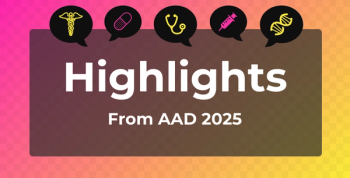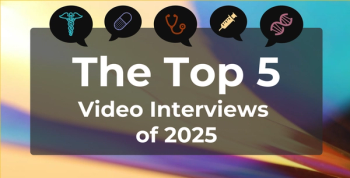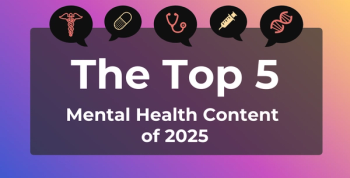
Gluckman Calls for Better Data, Payer Policies to Drive Value-Based CV Care
Ty J. Gluckman, MD, FACC, FAHA, who is medical director of the Center for Cardiovascular Analytics, Research, and Data Science at Providence St. Joseph Health in Portland, Oregon, addressed the 2022 Congress of the American Society for Preventive Cardiology meeting in Louisville, Kentucky.
With US health care costs already at 20% of the gross domestic product (GDP), each stakeholder in the system—patients, providers, the pharmaceutical industry, and payers—not only has a role in bending the cost curve, but also will face what Ty J. Gluckman, MD, FACC, FAHA, called the “tsunami” of costs that are coming thanks to COVID-19.
Gluckman, who is medical director of the Center for Cardiovascular Analytics, Research, and Data Science at Providence St. Joseph Health in Portland, Oregon, addressed the 2022 Congress of the American Society for Preventive Cardiology (ASPC), meeting in Louisville, Kentucky, with a talk, “Cost of prevention—how much is too much?"
The economic toll of atherosclerotic cardiovascular disease (ASCVD) is “staggering,” he said; it’s the top killer in the United States, “so it’s not surprising that it has substantial direct and indirect costs.”
Through 2018, direct annual costs for CVD are $225 billion, and indirect costs are even higher. One approach might be to look for ways to cut back on that spending, Gluckman said, or “One could have the opposite view, and [ask] how do we invest more to be able to bend the risk curve and therefore mitigate the risk of downstream costs?”
Unfortunately, Gluckman said, the fallout from COVID-19 may create a health care “tsunami,” according to
Already, Gluckman said, the loss of workplace wellness programs and the lack of activity during the pandemic have triggered a rise in hypertension and obesity. He shared charts with data on these points, and added, “The trends are pretty ominous.”
Results from before the pandemic, based on a cohort enrolled in
Thanks to the pandemic, the United States is likely to have more high-risk patients.
Novel Therapies, Higher OOP Costs
A central balancing act that cardiologists face today is how to prescribe patients enough medication—and the right medication—without setting them up to not be able to afford the out-of-pocket (OOP) costs.
“We have a range of pharmacotherapies that aim to move the needle in the risk factors we treat,” he said, noting how other speakers had discussed the need for more use, not less of sodium-glucose cotransporter-2 (SGLT2) inhibitors or glucagon-like peptide-1 (GLP-1) receptor agonists.
In many cases, patients would benefit from multiple medications, but the OOP would be unaffordable.
As far
In the SGLT2 inhibitor class, for example, cost-effectiveness studies are being redone in light of clinical trials that show the drugs first approved to treat type 2 diabetes can also treat heart failure and chronic kidney disease. A
Gluckman also noted that increasingly, clinical trials are segmenting out how novel therapies work in specific high-risk subgroups. This was seen in the
Although trials may report a mean effect, for the individual patient, “There is no such thing as a mean treatment effect,” he said. “Rather, as many have suggested today, we should be researching our population to find out how do we disproportionately utilize therapies—especially therapies that may be more expensive.”
Just as physicians should argue for approval for therapies for patients who will see the most benefit, they should withhold therapy if little benefit will be seen. Such an approach will take cooperation across stakeholder groups, including industry and payers.
Gluckman ended with a call for better health plan design to ensure access to not only therapy but all high-value health services. “I think our insurance companies—our payers—bear special responsibility for this,” he said, citing principles developed at the University of Michigan’s
Gluckman shared an excerpt from a piece he co-authored on the
“While many insured patients with ASCVD are ostensibly “covered,” they often face high out-of-pocket costs, partly to ensure that they have ‘skin in the game.’ An unintended consequence of this cost-sharing is that it indiscriminately limits use of all clinical services, including those that are both high-value and low-value.
“Beyond some preventive services, which are often exempt from deductibles, copays, and coinsurance, current health plan designs do not provide similar access to many of the evidence-based therapies known to reduce the risk of adverse cardiovascular events. Even for patients at highest risk, where use is likely to be most impactful, these therapies paradoxically remain subject to traditional non–value-based plan designs,” they wrote.
Little wonder, then, that adherence is compromised, and “the promise of high-value care is lost for those who need it most.”
Both prevalence and cost of cardiovascular disease will keep rising, with “no end in sight,” Gluckman said. The benefits of prevention, thus, should be “more thoroughly realized in those that are highest or very highest risk.”
With the increased availability of novel therapies, more and better data are needed to drive the value discussion, so that the right patients receive treatment. “Finally, insurance plans must be redesigned to ensure access to low-cost, high- quality and readily accessible health care.”
Newsletter
Stay ahead of policy, cost, and value—subscribe to AJMC for expert insights at the intersection of clinical care and health economics.







































